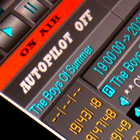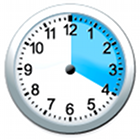How to build a song database and set up your music scheduling software to create variety & flow? The 20 minute format rule and 5 essential song criteria explained.
The first part covered common music scheduling practices, and the importance of a narrow focus to achieve broad results. It also pointed out that every programming decision should be made with the listener in mind. Time for hands-on advice that Sky Radio Group PD Uunco Cerfontaine shared during the same speech.
 Create the radio station music database
Create the radio station music database
When the market study, audience research and music testing are done, the music director can implement the programming strategy and create the song database. Every song is defined after which scheduling rules are set to determine the music balance. There are some important guidelines for setting up the database system. Sky Radio Group uses RCS Selector. Powergold and MusicMaster are other well-known music scheduling software developers.
5 Essential criteria to define songs
Basic song descriptions are as title, artist, male or female lead vocals, cold or fade ending, and similar things. These are important, but there are 5 essential criteria for defining songs in the music database:
- Sound: defined by genre (Pop, Rock, Dance, Urban, etc.)
- Mood: defined on a 1-5 scale (1 is very sad, 5 is very happy)
- Energy: defined on a 1-5 scale (1 is very low, 5 is very high)
- Tempo: defined on a 1-5 scale (1 is very slow, 5 is very fast) or by BPM (beats per minute)
- Daypart: defined in a calendar that shows on which days & hours the song may be played
 Music choices should be listener oriented
Music choices should be listener oriented
Cerfontaine underlines the principle that – just as any music decision – also this process of ‘tagging songs’ should be done while having and keeping the target audience in mind. Two different groups of people could think differently about the same piece of music. “Keep in mind what your listener will think about a particular song.” He uses Don’t You Forget About Me by the Simple Minds as an example.
Sky Radio audience: heavy Rock
“This is a heavy song for Sky Radio”, says Cerfontaine. Therefore it’s tagged with mood: 4, energy: 5. Also the song is ‘R’ rated, as it’s a Rock song in the perception of Sky Radio’s female target audience. Dayparting rules reveal that it can’t be played during evenings and Sunday morning (“We want the station to sound a bit softer at those moments”). Separation rules show that after the Simple Minds are played, they tell the system ‘forget about me’ :-). The song is put back to the very bottom of the stack (lowest category rotation possible).
 Radio Veronica listeners: mainstream Pop
Radio Veronica listeners: mainstream Pop
The same song gets a different rating at Radio Veronica. This station has a Classic Rock based format (late 70s, 80s, 90s and some 2000s) and a male target audience. Energy, for example, gets just a 4 – the format includes songs with more power. For Radio Veronica it’s a core classic that can be played anytime, and it doesn’t get an ‘R’. Their listeners perceive Rock as something like Paradise City by Guns ‘n Roses.
Separations influence rotations
When the entire database is complete, the scheduling rules are being set. Separation is an important factor; it ensures that the entire music library is perfectly spread over the scheduled days. Music testing often determines in which category a song is placed (e.g. power currents could be placed in A, and secondary currents in B). Research data may also be used to determine separations. The best testing songs could get the lowest separation and come around more often. Separations can be set for diffferent criteria, such as:
- Title: minimum time interval before playing the same title
- Artist: minimum time interval before playing the same artist
- Characteristics: how many songs with the same characteristics can be played in a row
 Over exposure vs. station branding
Over exposure vs. station branding
Separation rules sometimes lead to rotation conflicts (unscheduled positions) when one artist or producer is involved in many (current) songs. Cerfontaine: “Lady GaGa has so many hits that you hear one of her songs every 35 minutes on Z100.” However, certain artists contribute to the radio station image. For example, David Guetta is a key artist for Rhythmic CHR. “These artists could be included in a separate category with a larger turnover.”
Editing logs manually
Whether some artists have many popular songs, or the overall scheduling rules are simply too tight – it will lead to some unscheduled positions. For this reason alone it’s important to check a computer-scheduled log manually and edit where needed. Another reason could be that you want to check if the running order creates smooth transitions. However, the most important factors are music variety and format recognition.
 Every format benchmark, every 20 minutes
Every format benchmark, every 20 minutes
Every format-defining music category should come around (at least once in) every 20 minutes. Cerfontaine: “Don’t concentrate too much of the same music styles in one place. Make sure there is enough variety, as variety creates music flow.” If you’re a mainstream CHR station that plays an equal amount of Pop, Rock, Dance and Urban, then 4 all genres should be heard by a listener within 20 minutes of turning on the radio.
Spin-off formats need variety, too
The 20-minute-rule applies to spin-off formats as well. “I visited Power 106 in LA and noticed that they divided their Urban Top 40 library into different subcategories. From genres such as R&B, Soul and Rap, to where the act is coming from – such as the East Coast or West Coast, which was kind of an issue back then. Listeners who tune in, need to recognize you and feel: this is my station. This is where science meets art: create as much variety as possible.”
 Hybrid formats need extra attention
Hybrid formats need extra attention
The 20 minute rule is especially important for stations with a hybrid format (see Music Scheduling: Narrow Focus, Broad Results). They are close to the format of competitors. The program director hears that “stations sometimes ‘steal’ each other’s core songs. Radio 538 recently played Just Haven’t Met You Yet by Michael Buble. He is more a Sky Radio type of artist. After that, they play Lady GaGa or Usher, which makes the station ‘538’ again.”
Personality jocks can be resilient
Radio personalities sometimes challenge music directors. “The larger the station, the bigger the names, the tougher they are – but also the more fun to work with.” Cerfontaine sees that while music directors schedule songs for listeners, radio personalities love to make a great sounding show. “The turnover of some songs can irritate them and they shout: Queen drives me crazy! I’m hearing Queen all the time here; I’ve had it! Jocks experience their show from the beginning till the end – and hear the entire station more often and longer than the average listener does.”
 Respect your radio personalities
Respect your radio personalities
Cerfontaine states that music directors should never give jocks the ‘you don’t matter; it’s all about the listener’-attitude. “Deejays and presenters offer the extra value that you need as a station. The music is really important, but personalities can make the difference. It’s important that music directors have a good personal relationship with jocks. Together they make the station successful.”
3 Please-the-jock tactics
Three ways to keep your radio personalities motivated while guarding the station format and playlist quality:
- Avoid scheduling same artist (and song) in one show. Obviously jocks don’t like to hear the same artist twice during the same shift, let alone the same song. In the States it’s quite normal to play Lady GaGa six times in a three hour show, but if you can avoid it without breaking station policies – do it.
- Start new shows & music sweeps with energy. Deejays like to kick off their show or another music sweep with an uptempo song – although this is more important for CHR than AC stations. But think of your listener, too – they rarely tune in at the beginning of a DJ-shift or music marathon.
- After a power talk, schedule a power song. If you just gave away a new car to a happy listener, it’s killing to play Everybody Hurts by R.E.M. right after…The format clock usually shows when the contest winner will be announced, so make sure you schedule a song to keep the energy flowing.
Read also: Music Scheduling: Narrow Focus, Broad Results





Hi Enrique,
Yeah, I think that makes a lot of sense.
The smaller your library is, the easier your rules should be, and thus the simpler your coding should be.
Where you might play about 150 songs in Top 40, you could play around 600 in AC, where it can be helpful to use level 1 and 5 for extremes and 2, 3 and 4 for slow, medium and fast.
Then you could define in a matrix that an extremely slow (level 1) songs always needs to be followed by a level 3 or 4 song, but not an extremely fast (level 5) song – to avoid irritating transitions (unless you have a suitable transition jingle in between).
More about this sound coding topic in an expert interview, which we’ll publish over the next weeks.
Stay tuned! :-)
Thomas
I’m usually using 5 tempos for an Oldies station, and 3 for a Top 40.
Hello,
Thomas is right and usually three tempo categories are enough to make a great fit. (We use the 1 and 5 to cover exceptions: Nothing Compares To You, or Tracy Ullman.)
In our practice, usually 120+ is considered as fast, but as mentioned above, in uncertain cases the HOW DOES IT SOUND is the best way… and certainly it depends on your format. A Rock Ballad station should consider a 103 BPM song a ‘chainsaw’ fast one :-).
Accordingly, your music scheduling software manual (usually) uses ‘example approach’ and this is what I recommend, too: pick 3-4 typical songs for each tempo category – save this list for further reference – and measure their BPMs. Here you go.
Best,
Antal
Hi Hower,
Good question!
I think these are pretty much subjective criteria, but this is what you could use as a guideline:
Slow = under 80 BPM
Medium = 80-110 BPM
Fast = over 110 BPM
The reason that these numbers are arbitrary, is that they’re relative – it’s like the wind chill factor where the perceived temperature is lower than the actual temperature, due to a cold wind that makes it feel like it’s 10 degrees colder.
Same is true for BPM. Some songs may come across as uptempo, while the actual (BPM) tempo would fall into the ‘medium’ range and maybe even into the ‘slow’ category – and the other way around.
If your music scheduling software allows it, you could use separate criteria fields for the actual BPM tempo (useful if you’re planning to automatically ‘beat match’ station idents and songs later) vs. the perceived tempo feel.
So if we’re speaking of art versus science, I would mainly go for the art (of gut feeling) here. Tempo feel may be more important than the actual BPM number in the computer.
Hope this helps!
Cheers,
Thomas
Regarding tempo: defined on a 1-5 scale (1 is very slow, 5 is very fast) or by BPM (Beats Per Minute).
How to define tempo by BPM?
What are the BPM tempo markings for each tempo, such as slow, medium and fast?